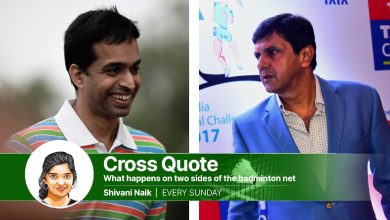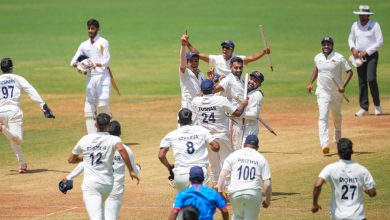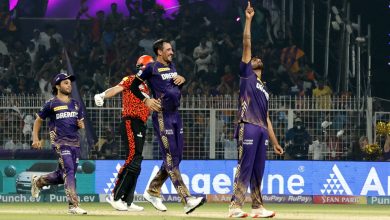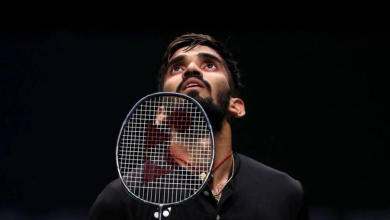Switching between melodies to rock, Modric dictates Croatia’s tempo

Long after the soul-sapping, bone-crushing quarterfinal against Brazil, as the ground-staff were about to wipe the blood and tears, fragments of Brazil’s broken dreams, shed on the ground, Luka Modric took his four children to a corner of the ground for a kick-about. All of them wore papa’s shirt, an overlarge, elegant red and white chequerboard with papa’s number and name printed in bold. Some of his teammates, the children, support staff, volunteers and journals would gather around them, transfixed every touch he made on the ball, silken, precise touch, with the instep, with the out-step, with the outsole, as though watching a magician in his backroom.
As if conscious of the gathering, Modric performed a trick you rarely spot him do, a gasp-inducing dribble, inviting banter from a teammate, before he unfurled an audacious back-heel. After 120 minutes and stoppage time sundries, after making 140 touches, 115 passes, of which 20 were made in the final third — all metrics the highest any player in the game — he still looked daisy-fresh, still eager and energetic to dictate the tempo for another 90 minutes. He is 37, his wispy stubble dotted with grey sprouts, his speed reduced, the golden locks not as thick as it once was, but here he was, sprightly and springy as he ever had been, rather as he always has been; here he was flitting from one box to another as though floating on ice in Zadar in winter, shuffling and spinning past opponents, stealing the ball off the opponents, smuggling it to their box, envisioning the pass that no one visualises, processing the sequence that no one process.
” id=”yt-wrapper-box” >
These are Modric things that Modric does. Only that he does those things at 37 that he did at 21. Age forces reinvention in roles; but Modric seems to have reinvented age. Criano Ronaldo runs and dribbles these days, play-makes even less; Lionel Messi dropped deeper and deeper, shed the wings for a more central, play-making role. Neither drop deep to defend, unless there is utter bedlam. Their heat-map of Messi would show an orange clump from half-line to penalty box. Like a large pothole in the middle of the road. Modric’s would be an orange swamp that spreads from his box to that of his opponent, like an un-tarred path in wilderness.
Against Brazil, he was everywhere and everything. He was the supplier and sustainer, destroyer and disruptor. Croatia’s goal began with him wrestling past his friend and ex-colleague Casemiro for the ball and sliding in a pass to Mislav Orsic on his left. Freeze at the exact moment he wins the ball. He looks upfield for a split-second, photographs the field in his brain, computes the different moves he could initiate and picks the most goal-viable route. That is feed Orisic. He was not just free, but he is quick too; the Brazilian right back Alex Sandro has just come off an injury and was yet to hit his usual pace-levels. Moreover, he had just come in as a substitute and was feeling the way about. To factor in all these minute details in a second is the genius of Modric, his speed of thinking, his speed of execution. Experience, the pragmats would say; intuition the romantics would rave. You also have to pause at the exact moment Bruno Pektovic lashes the equaliser. Modric was just two yards behind him, to win the second ball in case the shot was blocked.Subscriber Only StoriesPremiumPremiumPremiumPremium
You can pick and pause at any Modric moment and marvel at his genius. There was a sumptuous move when he turned a defensive move into an attacking one. He snatched the ball from Fred after his heavy touch, and then with a pirouette, he left Fred in the wake and charged upfront. The latter made a desperate tackle, but ended up stamping his studs on the grass. He tricked out Neymar too, with a cute shuffle of his hips. Neymar was charging to intercept a pass that Modric was lining up to Mari Palasic, but instead he over-ran himself and fell on the floor.
He was so omnipresent that at one moment he would be with Josip Juranovic on the left, snuffing out the danger of Vinicius Junior, who touched the ball just once in the box. The next minute, he could be seen helping out Borna Sosa contain Raphinha, and in the next out-muscling Casemiro to control the midfield. Once he gained control, he would make the game sing his tunes, dance to his riffs. He slowed the game down, frustrating the Brazilians. That’s the enduring beauty of Modric, he sets the game’s music and melody.
” id=”yt-wrapper-box” >
He was, thus, at the same time Croatia’s defensive midfielder, attacking midfielder and the link-up man, and the best in all these against the team that was touted as the tournament favourites. Zlatko Dalic, Croatia’s manager would call him the “best in the world.” He fumbled for words when asked to elaborate on his virtues. “What more can I tell that you have not seen, read or heard about?” he asked. Then after a pause, he said: “He is in a space of his own.” The word space is apt. Modric’s sole obsession for finding space, manufacturing space, killing space, and choking space. He creates, he destroys—he also links both. “He is the most flexible player I have worked with,” Zinedine Zidane, who managed him at Real Madrid would say. A total footballer in the body of a total midfielder. “But what sets him apart is his heart, his competitiveness,” the French maestro would add.
To understand his quest for his success and his streak of competitiveness, you need to revisit his childhood. After all the pangs of displacement in the war-ravaged Balkan—his grandfather with the same name was killed—forcing his family to flee from the village of Zaton Obrovacki and relocate to Zadar, he became a fan of Hajduk Split, the team with the largest fanbase in the coastal province of Dalmatia. At 14, he attended a trial at Hajduk, but was snubbed because he was short. “I’ll never forget that moment. I couldn’t accept it, how coldly they told me,” he writes Modric in his book.
That was the moment that ignited his dreams. A year later, he ended up joining his boyhood club’s biggest rivals, Dinamo Zagreb, where he caught the eyes of Tottenham Hotspur scouts as a classical No 10, a playmaker. But in his second year at White Hart Lane, when Harry Redknapp took over, he decided to drop him deeper, as the defence-midfield link. Years later, when he won the Ballon d’Or, he would thank Redknapp. “Before, I used to play more offensively. But when I dropped back, I could read the game better, show my creativity more, and more aspects of my game. It was my second year at Tottenham, when Redknapp was in charge. He put me in the middle. From there, I was playing central midfield,” he said on the sidelines of the ceremony.
The versatility helped him at Real Madrid, where he was shunted from one role to another, yet fitted into all roles with aplomb, making him the most valuable player for all managers, from Carlo Ancelotti to Jose Mourinho and Zidane. “I’ll continue to start Modric even after he’s 40. He won’t retire until he has my permission to retire,” the Italian manager once said, apart from calling him and fellow midfielder Toni Kroos as the easiest players he had ever managed in his career.
All that has been missing from the Modric show is a goal, one lasered from the outside of his boot, a shot most difficult (try this and in all likelihood would tw your ankle). Maybe, somewhere in the footballing narrative that is waiting to unfold, a strike from outside of Modric’s boot is waiting to arrive.







